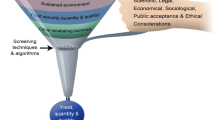Abstract
The groundbreaking research carried out by Philip R. White in the 1930s and 1940s played a critical early role in the development of modern plant biotechnology and the production of biotech crops. He gained instant fame and became a historical figure early in his career by becoming the first person to attain unlimited growth of cultured plant tissues. White was one of the best known and most influential figures of his generation in plant cell culture research. His tireless and lifelong efforts to promote the use of plant cell culture systems inspired a generation of scientists and stimulated much scientific activity. White was not only a brilliant and visionary scientist but also a highly principled man who spoke courageously about the great moral and political issues of his day. He was admired as much for his science as for his humanity. His belief that plant cell culture research was not well represented at national and international meetings, and his deeply held conviction that science had to be international and without borders in order to be of service to humankind led to the founding of the International Association for Plant Biotechnology in 1963, currently the largest forum for the international plant biotechnology community. This tribute honors and celebrates Philip R. White for his inspiring science, for his kind and generous mentoring of young scientists, for his advocacy of plant cell culture research and its applications, for his promotion of international scientific exchange and cooperation, and for his leadership in the founding of the International Association for Plant Biotechnology.

Similar content being viewed by others
References
Gautheret R. J. Sur la possibilité de realiser a culture indefinite des tissues de tubercules de carotte. C.R. Hebd. Seances Acad. Sci 208: 118–120; 1939.
Kartha K. K. Elimination of viruses. In: Vasil I. K. (ed) Cell Culture and Somatic Cell Genetics of Plants. Vol. 1, Laboratory Procedures and their Applications. Academic, New York, pp 577–585; 1984.
Nobécourt P. Sur la pérennité et l’augmentation de volume des cultures de tissues végétaux. C.R. Seances Soc. Biol. Ses. Fil. 130: 1270–171; 1939.
Skoog F.; Miller C. O. Chemical regulation of growth and organ formation in plant tissues cultured in vitro. Symp. Soc. Exp. Biol. 11: 118–131; 1957.
Smith E. F.; Townsend C. O. A plant tumor of bacterial origin. Science 25: 671–673; 1907.
Tulecke W. Meeting Report. AIBS Bull. 134: 72–73; 1963.
Vasil I. K. The wanderings of a botanist. In Vitro Cell Dev Biol Plant 38: 383–395; 2002.
Vasil I. K. History and evolution of the International Association for Plant Biotechnology. In Vitro Cell. Dev. Biol.-Plant 44: 365–372; 2008a.
Vasil I. K. A history of plant biotechnology: from the Cell Theory of Schleiden and Schwann to biotech crops. Plant Cell Rep. 27: 1423–1440; 2008b.
White P. R. Potentially unlimited growth of excised tomato root tips in a liquid medium. Plant Physiol. 9: 585–600; 1934.
White P. R. Accessory salts in the nutrition of excised tomato roots. Plant Physiol. 13: 391–398; 1938.
White P. R. Potentially unlimited growth of excised plant callus in an artificial nutrient. Amer. J. Bot. 26: 59–64; 1939a.
White P. R. Glycine in the nutrition of excised tomato roots. Plant Physiol. 14: 527–538; 1939b.
White P. R. Nutrient deficiency studies and an improved inorganic nutrient for cultivation of excised tomato roots. Growth 7: 53–65; 1943a.
White P. R. A Handbook of Plant Tissue Culture. Jacques Cattell Press, Tempe, Arizona; 1943b.
White P. R. The Cultivation of Animal and Plant Cells. The Ronald Press, New Yok; 1954.
White P. R. The Cultivation of Animal and Plant Cells. 2nd ed. The Ronald Press, New York; 1963.
White P. R.; Braun A. C. Crown gall production by bacteria-free tumor tissue. Science 94: 239–241; 1941.
White P. R.; Braun A. C. A cancerous neoplasm of plants. Autonomous bacteria-free crown-gall tissue. Cancer Res. 2: 597–617; 1942.
White P. R.; Braun A. C. A cancerous neoplasm of plants produced by autonomous, bacteria-free crown-gall tissue. Proc. Amer. Phil. Soc. 86: 467–469; 1943.
White P. R.; Grove A. R. (eds). Plant Tissue Culture. McCutchan Publishing Co., Berkeley, California; 1965.
Author information
Authors and Affiliations
Corresponding author
Additional information
Adapted from tribute paid to Philip R. White at the Opening Session of the 12th IAPB Congress, held on June 6–11, 2010, in St. Louis, MO, USA
Rights and permissions
About this article
Cite this article
Vasil, I.K. Philip R. White (1901–1968)—a tribute. In Vitro Cell.Dev.Biol.-Plant 47, 201–204 (2011). https://doi.org/10.1007/s11627-010-9338-z
Received:
Accepted:
Published:
Issue Date:
DOI: https://doi.org/10.1007/s11627-010-9338-z




